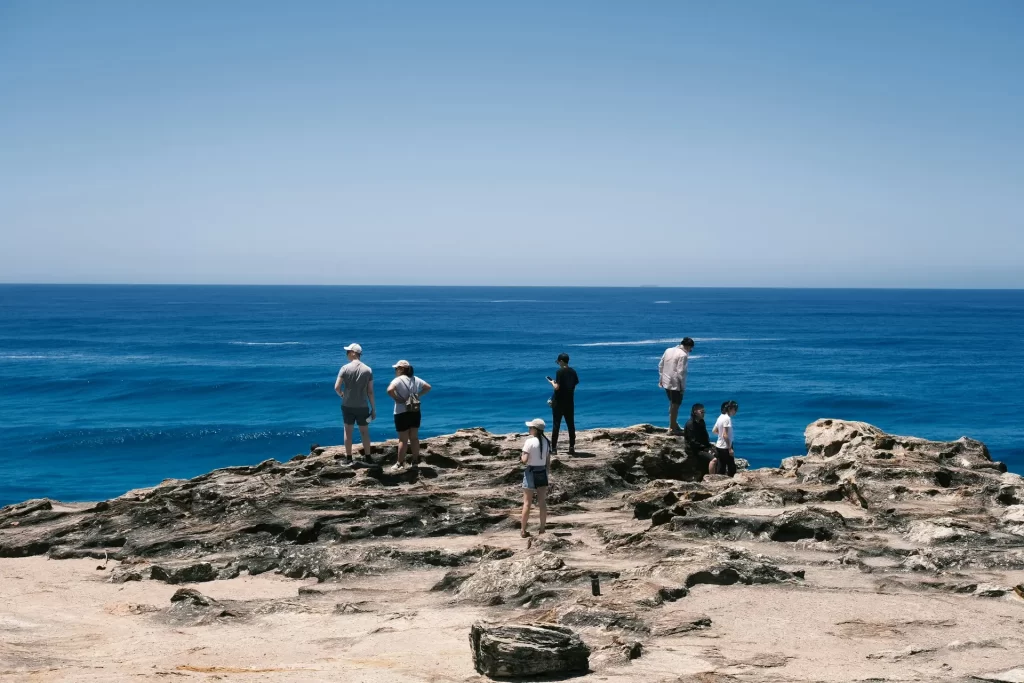
Table of Contents
1. Introduction
2. The History of Beachcombing
3. Techniques of Beachcombing
4. Treasures to Discover
5. Preserving Your Treasures
6. Conclusion
7. FAQs
(This post contains affiliate links, which means I may receive a small commission at no additional cost to you if you interact with them).
Read Time: 6 Minutes
Introduction
There is a certain magic that lingers along the coastline, where the vast expanse of the sea meets the earth. As the waves rhythmically kiss the shore and seagulls dance in the salty breeze, a hidden world awaits discovery. Beachcombing, an age-old pastime cherished by both young and old, beckons us to explore this captivating realm and unlock its secrets. It is an art form that combines the joy of wandering along sandy shores with the thrill of stumbling upon nature’s treasures, washed ashore like gifts from the ocean itself.
Beachcombing is more than a leisurely activity; it is a gateway to a deeper connection with the natural world. It invites us to engage all our senses as we embark on a treasure hunt along the water’s edge. The rhythmic lull of the waves, the crisp scent of salt in the air and the sensation of warm sand beneath our feet create a symphony that resonates with our soul. With each step, we become attuned to the subtle whispers of the ocean, eagerly anticipating the next serendipitous encounter.
In the history of humanity, the activity of combing the beach for hidden gems holds a special place. From ancient coastal communities who relied on the sea’s offerings for survival to modern-day enthusiasts seeking solace and inspiration, the allure of the shoreline has remained timeless. Throughout the ages, beachcombers have scoured the sands, gathering shells, driftwood and treasures of all shapes and sizes. Their discoveries, collected and admired, have become artifacts that tell stories of the ocean’s generosity and its intricate relationship with the land.
The art of beachcombing is not limited to a specific location or time. Whether wandering along the gentle beaches of the tropics, exploring rocky coves sculpted by the relentless waves, or venturing into the untamed wilderness of remote coastlines, each experience presents a unique tapestry of natural wonders. The treasures that await are as diverse as the ecosystems they originate from, from delicate seashells of vibrant hues to smooth sea glass, weathered driftwood and even the remnants of ancient marine life preserved as fossils.
In this article, we embark on a journey into the art of beachcombing. We will delve into the techniques that transform a leisurely walk along the shore into a captivating treasure hunt. We will explore the history of beachcombing and its significance in various cultures throughout time. Moreover, we will unravel the wonders that can be found in the embrace of the ocean, from the intricate beauty of seashells to the mysterious allure of lost treasures washed ashore.
So, prepare to immerse yourself in the art of beachcombing, where curiosity and serendipity intertwine and the shoreline becomes a canvas for discovery. Let us embark on this coastal adventure together, exploring the hidden gems waiting to be found as we open our hearts and minds to the whispers of the sea.
The History of Beachcombing
Beachcombing has a rich history that dates back centuries, intertwined with the human fascination with the sea. Ancient cultures and coastal communities have long been drawn to the shorelines, searching for a variety of valuable resources, including driftwood, shells, sea glass and even lost treasures from shipwrecks. Early beachcombers relied on these findings for practical purposes, such as building shelters or creating tools.
In the 19th century, beachcombing gained popularity as a recreational activity, especially in coastal areas of Europe and North America. People would spend hours strolling along the beach, collecting unique objects and natural curiosities as a way to connect with nature and embrace the tranquillity of the ocean.
Techniques of Beachcombing
Beachcombing is one of the best things to do at the beach other than sunbathe. To do it though, requires a keen eye, patience and a sense of curiosity. Here are some techniques to enhance your beachcombing experience:
Timing
The best time for beachcombing is during low tide or after a storm, as these conditions often reveal a greater abundance of treasures. Check local tide charts or weather reports to plan your beachcombing adventure.
Observation
Slow down and observe the beach carefully. Look for areas where debris tends to accumulate, such as sandbars, tide pools, or rocky outcrops. These spots are often hot spots for finding interesting items.
Scan the Shoreline
As you walk along the beach, scan the shoreline and keep an eye out for anything that catches your attention. Shells, driftwood, rocks and seaweed often hide unique treasures, so be open to discovering unexpected objects.
Investigate the Wrack Line
The wrack line is the area where seaweed and debris are deposited by the tides. It’s a fruitful place to find shells, sea glass and other small items. Carefully sift through the wrack line, being mindful of fragile ecosystems.
Respect Nature
While beachcombing can be exciting, it’s crucial to remember that the beach is also a delicate ecosystem. Respect local regulations, avoid disturbing wildlife or nesting areas and never take living creatures or endangered species.
Treasures to Discover
The treasures you can find while beachcombing is one of the main reasons to love going to the beach. They are also as diverse as the marine ecosystems themselves. Here are some common and sought-after items that beachcombers often encounter:
Seashells
Shells come in various shapes, sizes and colours. Look for whole shells, fragments, or uncommon species that have washed ashore. Each shell tells a unique story, showcasing the beauty of marine life.
Sea Glass
Sea glass is the result of discarded glass objects being tumbled by the waves, transforming them into smooth, frosted gems. These colorful treasures, often found in shades of green, blue and amber, can be collected and used for crafts or displayed as beautiful decorations.
Driftwood
Weathered and worn by the sea, driftwood is a popular find for beachcombers. Its smooth texture and unique shapes make it ideal for crafting, home decor, or creating natural sculptures.
Fossils
Coastal areas often reveal fossilised remains of ancient marine life. From seashell imprints to shark teeth and prehistoric bone fragments, beachcombers with a keen eye may stumble upon remnants of a bygone era. These fossils provide a fascinating glimpse into the history of our planet and the creatures that once inhabited it.
Lost Treasures
Beaches with a history of shipwrecks or maritime activity can occasionally yield lost treasures. While finding a pirate’s chest overflowing with gold doubloons may be rare, beachcombers have been known to stumble upon coins, jewellery and other valuable artifacts washed ashore by the tides.
Natural Oddities:
Nature has a way of creating peculiar and intriguing objects. Beachcombing may uncover uniquely shaped rocks, pieces of coral, or even rare seafaring creatures like sea urchins or starfish. These oddities make for excellent conversation starters and cherished keepsakes.
Preserving Your Treasures
Once you’ve collected your beachcombing treasures, it’s essential to handle them with care and respect their natural state. Here are a few tips for preserving and enjoying your finds:
Clean Gently
Remove any excess sand or debris from your collected items using a soft brush or a gentle rinse of freshwater. Avoid using harsh chemicals or abrasive materials that could damage delicate surfaces.
Display with Care
Create a display that showcases your beachcombing treasures. Consider placing them in a shadow box, arranging them in a glass jar, or incorporating them into a unique art piece. Ensure proper labelling if you’ve identified any rare or significant specimens.
Share and Educate
Beachcombing is an excellent opportunity to educate others about the marine environment. Share your knowledge and discoveries with friends, family, or even local community organisations to raise awareness about the beauty and fragility of coastal ecosystems.
Give Back
Participate in beach cleanup initiatives to help preserve the natural beauty of shorelines and ensure a clean environment for future beachcombers. By doing so, you contribute to the protection of marine life and the overall health of our oceans.
Conclusion
The art of beachcombing is a captivating and enriching pursuit that allows us to connect with nature on a profound level. As we walk along the shoreline, our eyes scanning the sands and our fingers eagerly picking up shells and sea glass, we become part of a timeless tradition that spans generations.
Beachcombing is more than just collecting objects; it is a way of embracing the wonders of the natural world. It teaches us to slow down, to observe and to appreciate the intricate beauty that lies at our feet. It reminds us that amidst the chaos of our daily lives, there is solace and tranquillity to be found in the rhythmic ebb and flow of the ocean.
Through beachcombing, we not only discover physical treasures but also cultivate a deeper understanding of the delicate balance between land and sea. We come to appreciate the rich biodiversity that thrives within Cairns Queensland holiday, recognising the importance of preserving these environments for future generations.
Furthermore, beachcombing invites us to unleash our creativity and imagination. The shells, sea glass and driftwood we collect can be transformed into art, crafting unique pieces that carry the essence of the ocean. They serve as tangible reminders of our connection to the natural world and can inspire us to incorporate its beauty into our daily lives.
As beachcombers, part of the beach etiquette is to bear a responsibility to be stewards of the environment. We must approach our treasure hunts with respect, leaving no trace of our presence and safeguarding the fragile ecosystems we explore. By practicing sustainable beachcombing and participating in beach cleanups, we ensure that future generations can also experience the joy of discovering nature’s gifts along the shoreline.
So, the next time you find yourself near the sea, take a moment to embark on a beachcombing adventure. Embrace the art of wandering along the shore, allowing the whispers of the ocean to guide you towards hidden treasures. Immerse yourself in the beauty of seashells, the allure of sea glass and the stories told by driftwood. Embrace the serendipity and wonder of beachcombing, for in doing so, you may not only uncover treasures but also find a deeper connection to the vast and awe-inspiring world that lies just beyond the crashing waves.
FAQs
What is the purpose of beachcombing?
The definition of beachcombing is the act of looking for and collecting items like driftwood and seashells along the shoreline.
Is it illegal to take shells home from the beach in Australia?
You should double check local and federal government sources for the current legislation on beachcombing. However, it is generally safe to assume that in nature reserves, national parks and areas of indigenous significance it is prohibited to take shells or any other debris home with you from the beach. Elsewhere you might be able to take home seashells or sea glass for non-commercial purposes. That said, if you want to collect more than 10kg on any single day, you may need a permit.
What is the best tide for beachcombing?
If you want to go beachcombing the best tide for doing that is at low tide, especially if you plan on exploring various rocky areas.



